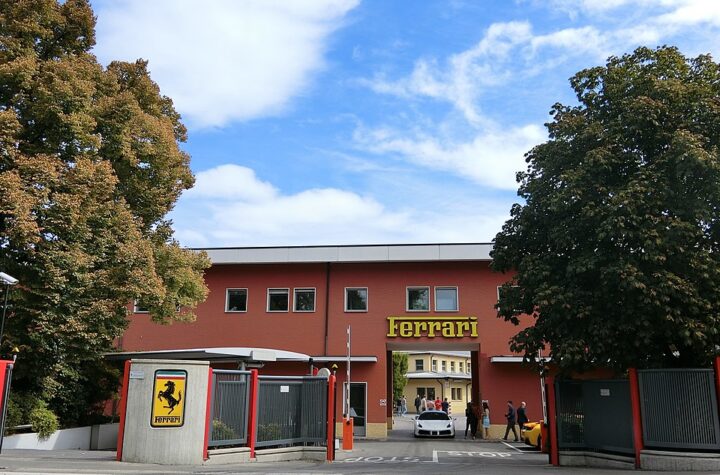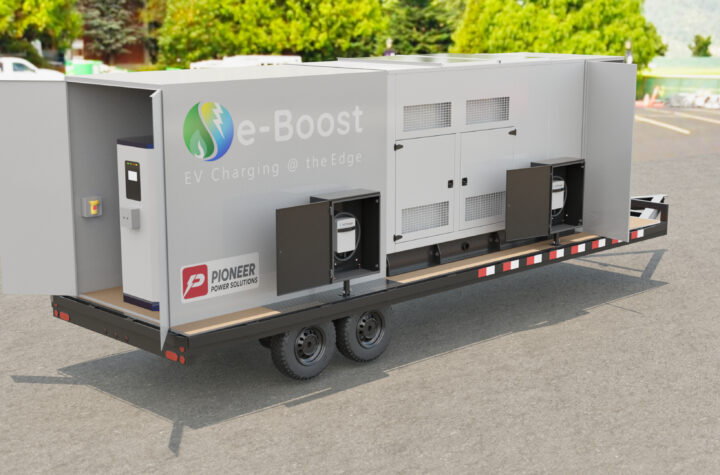
The Vehicle Technologies Program of the United States Department of Energy, Office of Energy Efficiency and Renewable Energy has the mandate to actively develop and deploy a broad range of clean and efficient vehicle technologies that can reduce America’s dependence on oil. The program supports the mission of the DOE to strengthen America’s energy security through public-private partnerships. America imports more than half of the oil it consumes – 69 percent of which is used for transportation.
The Vehicle Technologies Program aims to enhance energy efficiency and productivity; bring clean, reliable, and affordable energy technologies to the marketplace; and make a difference in the everyday lives of Americans by enhancing their energy choices and their quality of life. While the program supports a portfolio of advanced vehicle technologies, including advanced combustion, materials, and fuels technologies, its focus on electric-drive technology aims to reduce costs through three complementary component and system-level technology routes:
• To bring down the cost of lithium-ion batteries and other advanced energy-storage technologies.
• To reduce the cost of advanced power electronics and electric motor components.
• To develop and validate models and simulation tools to predict the performance, fuel economy and emissions of advanced conventional and electric-drive vehicle systems.
A key goal of the program is to reduce the production cost of high-energy, high-power batteries from $1,200 (USD)/kWh in 2008 to $300/kWh by 2014, thereby increasing the availability of plug-in hybrid electric vehicles (PHEVs) for American consumers.
Over the past couple of years, the Vehicle Technologies Program awarded $2.4 billion to new battery and electric-drive component manufacturing and vehicle deployment projects. These include battery and power electronics manufacturing facilities, PHEV, and electric vehicle (EV) demo projects, as well as education projects. As the largest single investor in these technologies, this program will jumpstart U.S. manufacturing capacity and deploy more than 13,000 vehicles and nearly 23,000 Level 2 charging stations across the country. The program’s fiscal year 2011 budget is approximately $300 million, which supports research for hybrid drivetrains, advanced batteries, lightweight materials, advanced combustion and fuels, vehicle systems integration, and deployment activities.
The program works through two major government-industry endeavors –U.S. DRIVE (Driving Research and Innovation for Vehicle efficiency and Energy sustainability) and the 21st Century Truck Partnership. The former seeks to accelerate the development of advanced automotive and energy infrastructure technologies that can reduce dependence on petroleum and significantly reduce harmful emissions from the transportation sector. U.S. DRIVE facilitates frequent and detailed technical information exchange among government and industry experts, who discuss critical R&D needs, develop technical targets and roadmaps, and evaluate R&D progress. The Partnership examines a broad portfolio of advanced technologies including advanced batteries, power electronics and electric motors, advanced combustion, lightweight materials, vehicle-to-grid interaction, and fuel cell and hydrogen technologies.
The 21st Century Truck Partnership aims to cut pollution from trucks and buses while they safely and cost-effectively move larger volumes of freight and greater numbers of passengers. Again, the critical goal is to dramatically reduce dependence on imported oil.
Through its competitive solicitation process, the Vehicle Technologies Program has supported a number of innovative technologies and companies. This includes A123 Systems, a battery company developing advanced lithium-iron-phosphate cathode material which is safer and lasts longer. The company has commercialized lithium-ion battery systems for hybrid electric vehicles (HEVs) and PHEVs. The program also has sponsored the development of a two-mode hybrid system for hybrid buses in collaboration with GM and Allison Transmission. This system enables high performance and fuel economy over a range of conditions by allowing the vehicle to function optimally in two separate modes – low speed/light load and high speed/heavy load.
The Vehicle Technologies Program also sponsored Semikron in developing an inverter with improved technical and cost features that were incorporated into a GM program called Project Driveway, which tested the real-world performance of fuel cell vehicles. The Vehicle Technologies Program is credited with accelerating the implementation of the new inverter technology in automotive applications. Collaboration with the automotive industry also resulted in other successes, including new materials and packaging improvements that increase power density in automotive power electronics by 45 percent while improving reliability and bringing costs down by 40 percent.
The Vehicle Technologies Program also supported ANL’s powertrain systems analysis tool, or PSAT, in the late 1990s. PSAT enables dynamic analysis of vehicle performance and efficiency to support detailed design, hardware development and validation of vehicle components and systems. In 2004, PSAT was selected as the primary vehicle model for all the Vehicle Technologies Program’s activities and today is used by more than 130 companies including major automakers. Building on this success, the program has since deployed the next-generation vehicle modeling tool called Autonomie, which uses a plug-and-play architecture to analyze the performance and efficiency of a variety of powertrain technologies. This allows faster development of new vehicles, accelerates technology transfer, and reduces cost.
In August 2011, DOE announced new competitively-selected projects totaling $175 million over the next three to five years to accelerate the development and deployment of advanced vehicle technologies. The funds will leverage additional investments by the grantees for a total of more than $300 million. Forty projects across 15 states will help improve the fuel efficiency of next generation vehicles.
The department says that overall, the selections focus on eight approaches to improving vehicle efficiency: advanced fuels and lubricants to enable optimal performance of advanced combustion engines; lightweight materials to accelerate commercial availability of lighter-weight vehicles while maintaining safety standards; lightweight multi-material prototype to design, build, and test a lightweight vehicle that is 50 percent lighter than a baseline light-duty vehicle, undertaken as part of the Clean Energy Dialogue with Canada; advanced cells for EV batteries; advanced power electronics and electric motor technology to develop the next generation of power inverters and electric motors; thermoelectric and enabling engine technology to convert engine waste heat to electricity; fleet efficiency to demonstrate fuel-efficient tire and driver feedback technologies; and advanced vehicle testing and evaluation.
In the same month, DOE announced nearly $7 million for independent cost analyses that will support research and development efforts for fuel cells and hydrogen storage systems. Over the next five years, four projects in California, Ohio, and Virginia will generate cost estimates for manufacturing equipment, labor, energy, raw materials, and various components. This research will help identify ways to drive down production costs of transportation fuel cell systems, stationary fuel cell systems, and hydrogen storage systems. These projects will help DOE focus future research and development funding on the fuel cell components and manufacturing processes that can deliver the greatest gains in efficiency.
Automotive Industries spoke to Patrick Davis, program manager of the Vehicle Technologies Program office at the US Department of Energy.
AI: What makes the Vehicle Technologies Program so critical today?
Our dependence on imported petroleum is one of our greatest economic and national security risks and a primary driver for the Vehicle Technologies Program. Our nation imports more than 50 percent of the petroleum we use, and we export about $400 billion per year (about $1 billion per day) to pay for this imported petroleum. This is not sustainable in the long-term. Moreover, transportation accounts for approximately two-thirds of our petroleum use, and on-road vehicles are responsible for about 80 percent of our transportation energy needs. The Vehicle Technologies Program supports a broad range of advanced technologies that can significantly improve vehicle efficiency and reduce petroleum consumption, such as advanced combustion, materials technologies, and fuel and lubricant technologies. These solutions are critical to reducing our dependence on imported petroleum in the near term. Addressing this challenge over the longer term, however, requires fuel substitution, such as through vehicle electrification. The Vehicle Technologies Program supports a robust effort to accelerate the development of advanced batteries and other electric-drive components and systems, with a focus on reducing cost and improving performance to facilitate the widespread use of electric-drive vehicles.
AI: How would you rate the work of the program so far?
The Vehicle Technologies Program has an excellent record of success. A few examples:
• The batteries in all leading hybrids today contains DOE battery technology.
• The Vehicle Technologies Program has reduced cost of PHEV/EV Lithium Ion battery to $650/kWh (35 percent reduction from 2009 baseline of $1,000/kWh).
• The Vehicle Technologies Program and Argonne National Laboratory (ANL) developed breakthrough battery technology licensed to multiple automotive manufacturers/suppliers – this cathode technology results in much smaller and lighter battery cells and potentially lower-cost batteries.
• Program-sponsored R&D enabled engine manufacturers to improve diesel engine efficiency by 5 percent since 2002 (has saved 2.4 billion gallons of diesel fuel worth more than $7.6 billion – more than 60 times the Vehicle Technology Program’s $123 million investment in commercial engine R&D from 1999 to 2007).
• Program-supported light-duty engine R&D at Argonne National Laboratory, University of Wisconsin, and Sandia National Laboratory demonstrated engine technology that can potentially improve the fuel economy of engines by over 75 percent.
AI: Tell us a little about how the public-private enterprise model works – how effective is such a model?
The Vehicle Technologies Program seeks stakeholder and public input in many different ways. Among them are our public-private partnerships for research and development, which provide an important framework for frequent and detailed interaction with industry to discuss R&D needs, obtain industry input on research targets and roadmaps, and evaluate progress toward those targets. Each partner organization is engaged at multiple levels, so there is steadfast commitment from leadership, management, and technical staff. We operate by consensus, allowing all partners to have a voice in decision-making if they so choose. Although partners participate regularly in detailed technical discussions, each individual organization makes its own independent decisions regarding project management and funding. Our partnership framework helps to accelerate technical progress, as it allows peers in the technical community to regularly discuss pre-competitive, technology-specific R&D needs and challenges, identify possible solutions, and evaluate progress toward jointly-developed technical goals. It also prevents duplication of efforts between government and industry and ensures that publicly-funded research delivers high-value results and overcomes high-risk barriers to technology commercialization.
AI: In your mind, what is of the utmost importance today – speeding up the popularity of EVs and HEVs, improved battery storage solutions or the search for alternative fuels as far the US’ race to reduce dependence on oil imports goes?
The Vehicle Technologies Program maintains a balanced portfolio that includes advanced combustion, lightweight materials, and fuels technologies, as well as batteries, power electronics, and electric motors needed for electric-drive vehicles. All of these advanced technologies contribute to petroleum reduction by either improving vehicle efficiency or by fuel substitution. These technologies are not mutually exclusive, either. For example, vehicle lightweighting can increase the efficiency of the full range of vehicles and powertrains, and using advanced internal combustion engines in hybrid electric vehicles and plug-in hybrid electric vehicles will enable even greater fuel savings benefits.
AI: How does your program work in allocating resources or delegating importance to the different facets of the Vehicle Technologies Program mandate?
We work to maintain a steady balance across the portfolio of technologies the program supports, while also considering the importance of both near-term and longer-term technologies and their relative potential for reducing dependence on petroleum. With regard to vehicle classes, the program’s support of light-duty vehicle technologies generally reflects their significant contribution to highway transportation energy use, compared to other vehicle classes: light-duty vehicles account for 76 percent and heavy trucks account for 19 percent of U.S. highway transportation energy use (buses and medium trucks account for the remaining 5 percent). It is important to note, however, that much of the Vehicle Technologies Program budget supports the development of technologies applicable to both light-duty vehicles and heavy-duty vehicles, such as advanced combustion, hybridization, and lightweight materials. In addition, historically the balance between R&D and deployment has strongly favored R&D. Roughly 10 percent of the program’s annual budget supports vehicle deployment efforts, focusing primarily on facilitating local partnerships that can significantly leverage Federal funding to both accelerate market penetration of commercially-available advanced vehicle technologies and raise awareness of other petroleum reduction strategies among the driving public.
AI: As far as EVs are concerned, how environmentally viable do you think they will be when considering power generation options today? How do you think this challenge will be surmounted?
Although battery electric vehicles (BEVs) produce zero tailpipe emissions, from a well-to-wheel perspective, their environmental attributes depend on the source of electricity used to charge the vehicle. While a focus of the Vehicle Technologies Program is to accelerate the development of electric drive vehicles, parallel efforts are underway in other areas within the Department of Energy to address emissions of power generation technologies. These effortsfocus on renewable electricity generation as well as technologies for clean electricity generation from conventional resources.
AI: Tell us a little about the FreedomCAR and Fuel Partnership initiatives that you have been involved in.
The Department of Energy has a long history of partnering with industry to advance the development of light-duty vehicle technologies. Beginning with the Partnership for a New Generation of Vehicles (PNGV) in the 1990s, this relationship has evolved over time in terms of membership, scope, and technical emphasis. FreedomCAR, and later the FreedomCAR and Fuel Partnership, was part of that evolution. In May 2011, on behalf of the Partnership, DOE announced the transition from FreedomCAR and Fuel to the next-generation partnership, called U.S. DRIVE (Driving Research and Innovation for Vehicle efficiency and Energy sustainability). Although the transition to U.S. DRIVE included the addition of two new partners, many of the basic tenets of FreedomCAR and Fuel remain. Like the FreedomCAR and Fuel Partnership, U.S. DRIVE is a non-binding and voluntary government-industry partnership focused on pre-competitive research of advanced automotive and related energy infrastructure technologies, and partners include DOE and automotive, energy, and electric utility companies. At the heart of the partnership are twelve technical teams that bring together the foremost technical experts from U.S. DRIVE partner organizations to discuss R&D needs, develop goals and technology roadmaps, and evaluate progress toward technical targets.
AI: What are some of the critical milestones of the U.S. DRIVE endeavor?
The Partnership sets research targets for key metrics in each of its focus areas, and each of the Partnership’s technical teams has a roadmap with a comprehensive set of detailed technical targets. As part of the transition from FreedomCAR and Fuel to U.S. DRIVE, we are updating those key Partnership targets and each of the teams is updating its technology roadmap and the technical targets therein. Examples of current targets include reducing the cost of advanced lithium-ion batteries to $300/kWh by 2014, reducing the cost of advanced electric-drive systems (advanced power electronics and electric motors) to $12/kW by 2015, and reducing the cost of automotive fuel cell systems to $30/kW by 2017.
AI: Similarly, what are some of the critical breakthroughs of the 21st Century Truck Partnership initiative?
The 21st Century Truck Partnership accomplishments include the design of a diesel electric hybrid drivetrain that has seen production in thousands of transit buses, increasing heavy duty diesel engine efficiencies while meeting stringent federal emissions regulations, and teaming with NASA and the national labs to explore new approaches to commercial vehicle aerodynamics. These elements and more have recently been brought together in four industry teams under the DOE SuperTruck Initiative to develop and demonstrate Class 8 tractor trailer systems with a 50 percent higher freight hauling efficiency.
AI: What will be the focus of your program in the next five years?
We will continue our support of a broad portfolio of advanced vehicle technologies, with an emphasis on research to overcome key cost and performance barriers to technology commercialization and market penetration.














More Stories
Renesas Introduces New MOSFETs with Exceptional Performance
VicOne at CES 2025 Showcases Award-winning Cybersecurity Portfolio and Emphasize Growing Range of Best-of-Breed Partnerships
Pioneer Announces e-Boost Order Valued at $1.3 Million